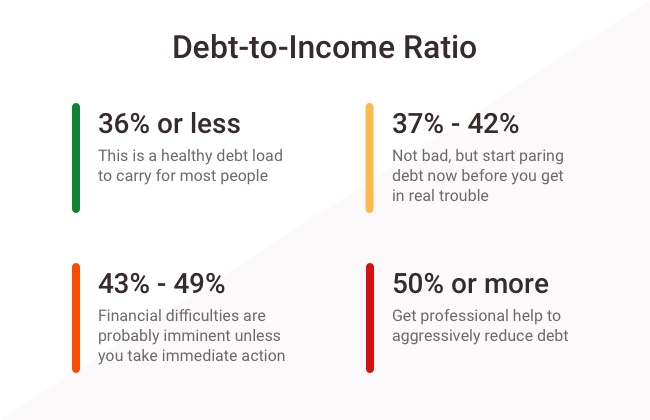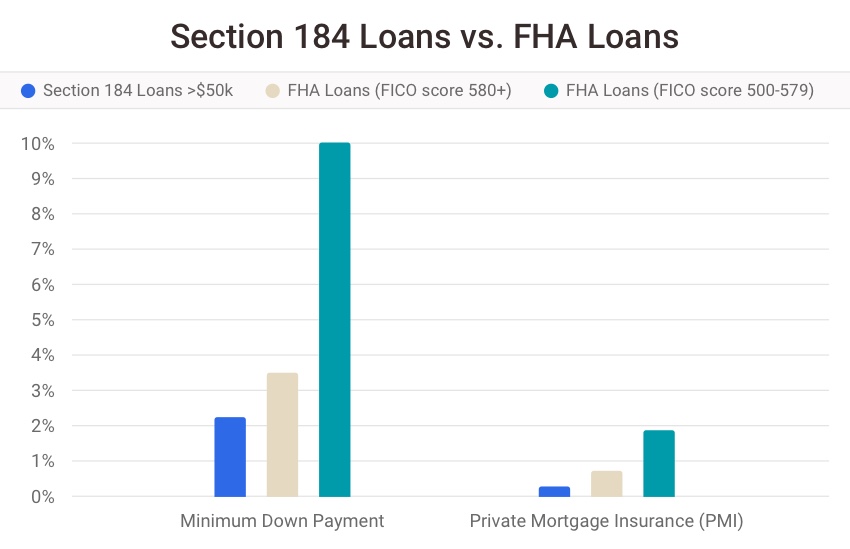Native Americans get needed boost toward home ownership
A federal loan program offers a helping hand to Native Americans seeking to buy, refinance or rehabilitate a home, but many potential applicants aren't fully aware of the program benefits—or even that the program exists.
Congress established the Section 184 Indian Home Loan Guarantee Program to make homeownership easier for Native Americans and to increase Native American communities' access to capital, according to the U.S. Department of Housing and Urban Development (HUD). In 2019, 50.8% of American Indians and Alaska Natives owned a home, compared to 73.3% of non-Hispanic white Americans, according to the U.S. Census Bureau.
Loans through the Section 184 program require a low minimum down payment—generally 2.25%, or as low as 1.25% for loans less than $50,000—and Private Mortgage Insurance (PMI) of only 0.25%.
By comparison, Federal Housing Administration (FHA) loan applicants with a FICO score of 580 or higher need a minimum down payment of 3.5%, while those with FICO scores between 500 and 579 need a 10% down payment, according to the current FHA Guidelines for Borrowers. PMI can run anywhere from 0.58% to 1.86% of the original amount of the loan, according to 2021 data from the Urban Institute.
"If you do that math, it makes a pretty big difference," said Karen Heston, senior mortgage banker with BOK Financial Mortgage in Oklahoma. The program enables Native Americans to buy a house—and spend relatively little money out of pocket to do so, she said.
Currently, Section 184 home mortgage loans are fully available in 24 states, including Oklahoma, Arizona, Colorado, Kansas, New Mexico and Utah. In 14 states, including Texas, New York and Connecticut, the loans are only available in certain counties and cities.
A full list of approved lending areas is available on the HUD website. To qualify, you must be an American Indian or Alaska Native who is a member of a federally recognized tribe.
Section 184 loans uncommon
Despite their widespread availability, mortgage bankers say that Section 184 loans make up a relatively small portion of the loans they process. BOK Financial® is one of only a few lenders able to accelerate the process by approving Section 184 loans on behalf of HUD, rather than sending paperwork to HUD for approval.
And yet only 1% of the 85,000 loans funded by BOK Financial since 2015 were Section 184 loans.
In Oklahoma, Mortgage Bankers Karen Heston and Terry Teel, said very few homebuyers ask specifically about Section 184 loans, even though they may qualify. Instead, the bankers often have to bring up the program as part of the conversation.
"You just have no way of knowing if someone is a tribal member unless you point-blank ask," Teel explained.
By contrast, Elvira M-Duran, mortgage banker with the BOK Financial Mortgage, said more Native Americans in New Mexico are directly asking for the loans.
"They're becoming more and more popular as Native people realize there's a specific product out there for them—especially now on tribal land," she said. "The tribal housing divisions are able to let members know that they can realize the goal of owning a home using this particular program."
Some who ask for the Section 184 loans don't fully understand how they work, experts say. One common misconception is that the program provides down payment assistance, which it does not. The program does lower the amount of down payment required, but it does not provide money for the down payment.
Some tribes and states offer down payment assistance, which can be used in conjunction with the Section 184 program.
Not a Band-Aid for bad credit
Another misconception is that the loans can be obtained even with bad credit.
"It says in the guidelines that there's not a minimum credit score, which is a little bit deceiving because HUD is also super picky about derogatory credit," Heston said. The program's written guidelines require a debt-to-income ratio of no more than 41%.
How to calculate your debt-to-income ratio
Step 1: Add your monthly debt payments (i.e., mortgage, car loan, student debt, credit card payments, etc.).
Step 2: Divide this total by your gross monthly income.
Total: This is your debt-to-income ratio.

"This product is really looking for people who handle their credit in a timely fashion," Teel agreed. "If you have marginal credit and collections, that's when it becomes a problem with this type of loan."
As a first step, applicants should meet with a mortgage banker to find out if they qualify and, if not, what they can do to fix that. Maintaining stable employment, avoiding new debts, paying down the current debts and saving money can all help you qualify in the future if you don't now, M-Duran explained.
Even with the challenging credit requirements, experts agree that the program is a huge boost for Native American homebuyers.
"It's just a fabulous product because the mortgage insurance is so low compared to an FHA loan. Then, you can piggyback it with down payment or closing cost assistance from the tribe," Teel said. "It just really helps a qualifying client get into a home for a reasonable amount of money."
